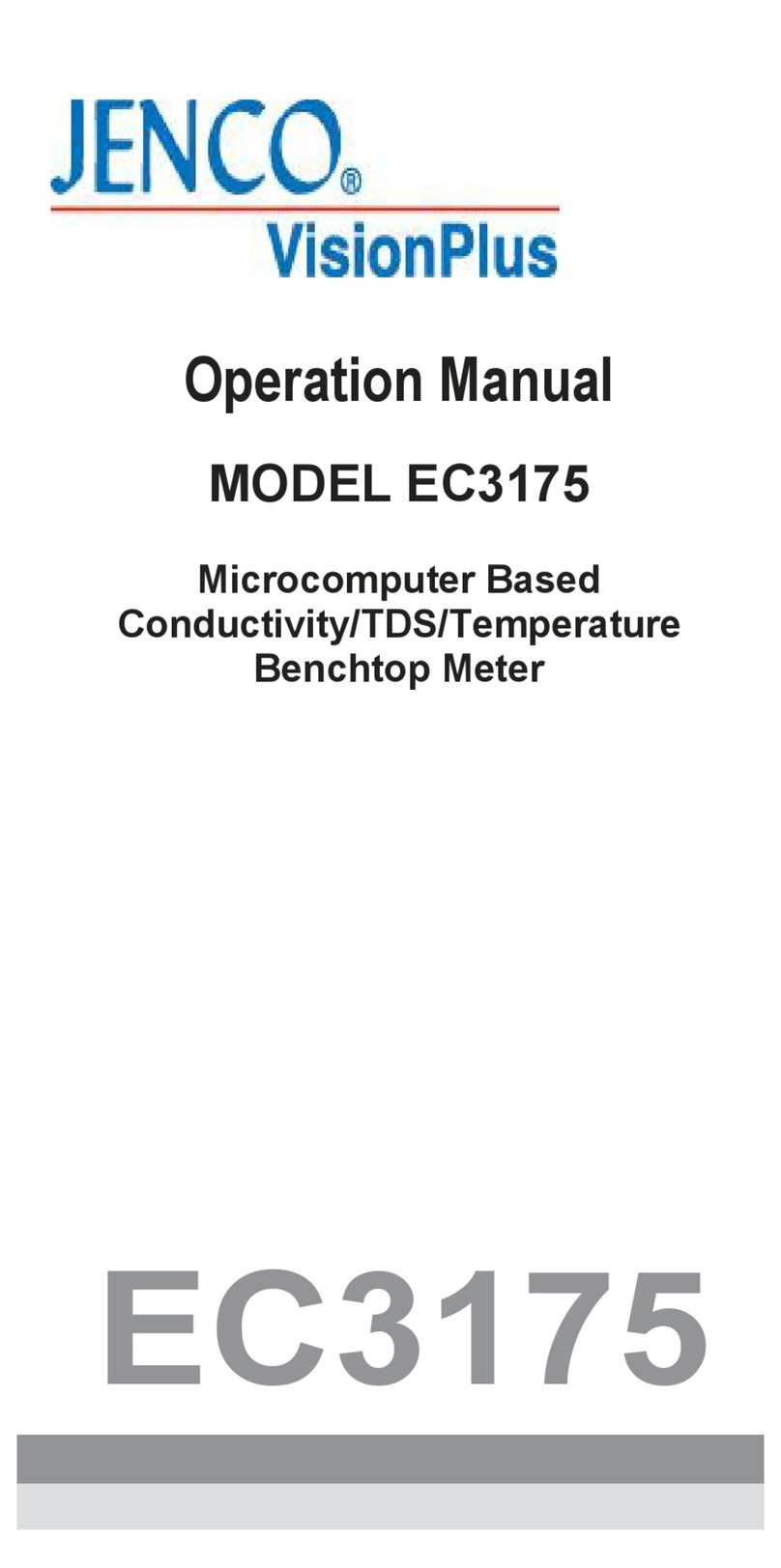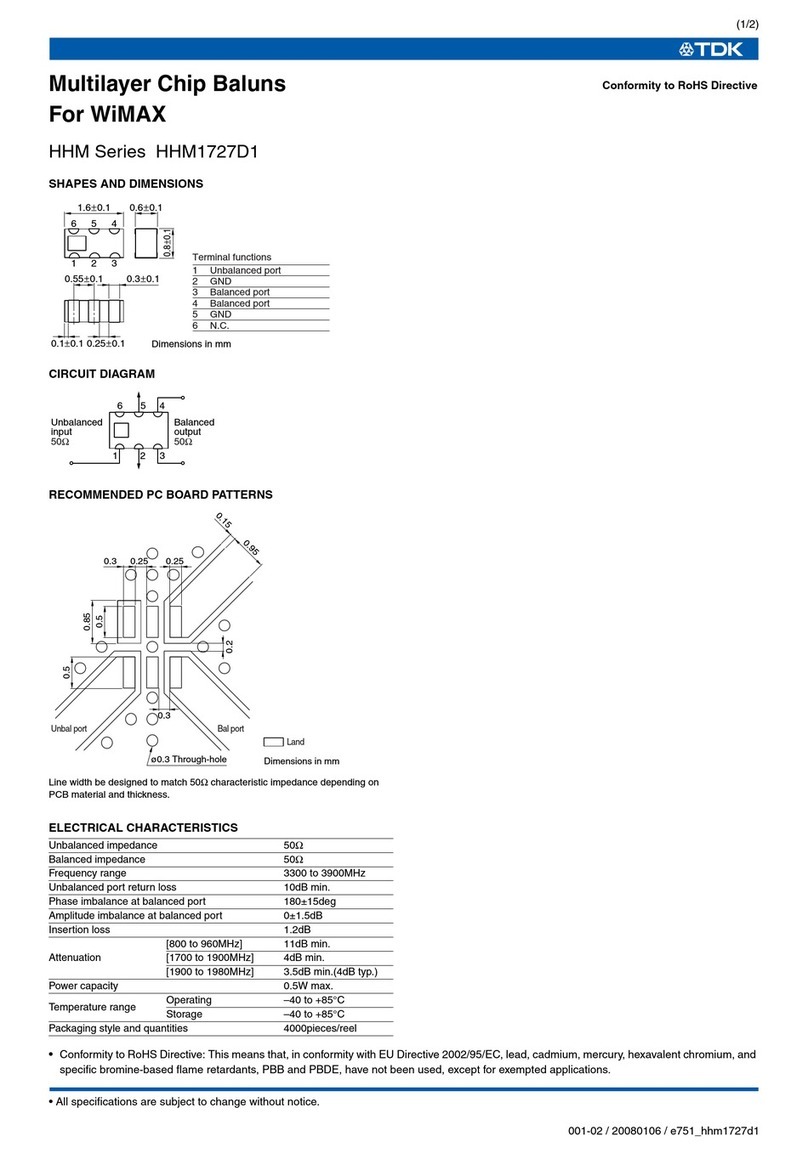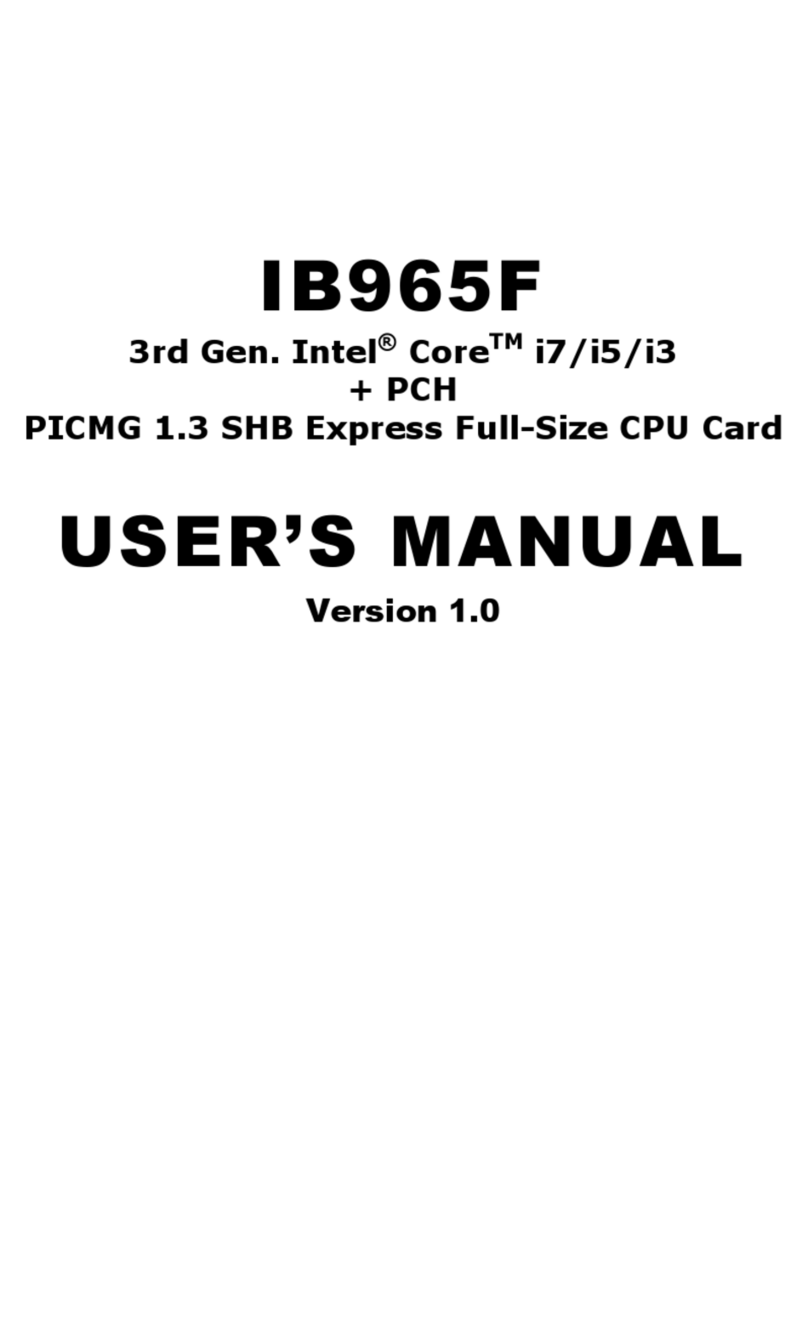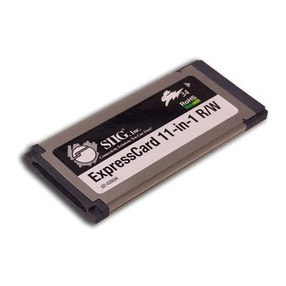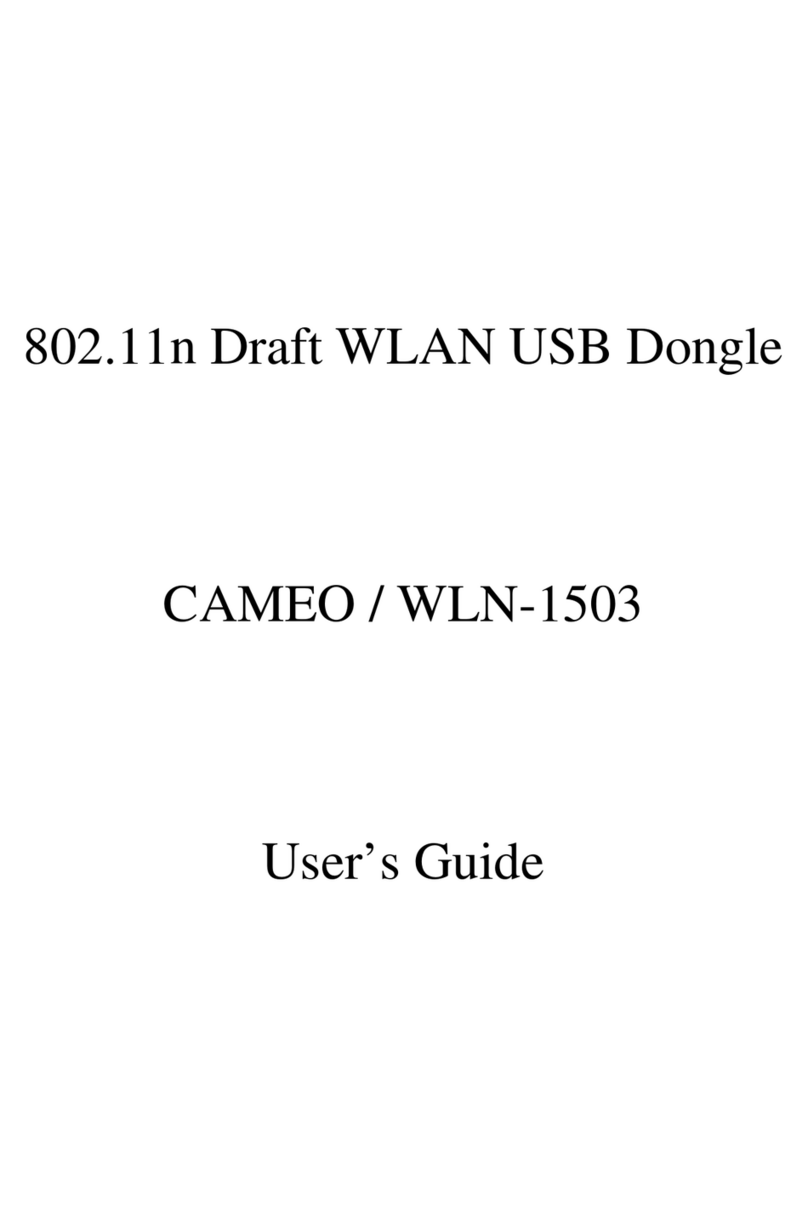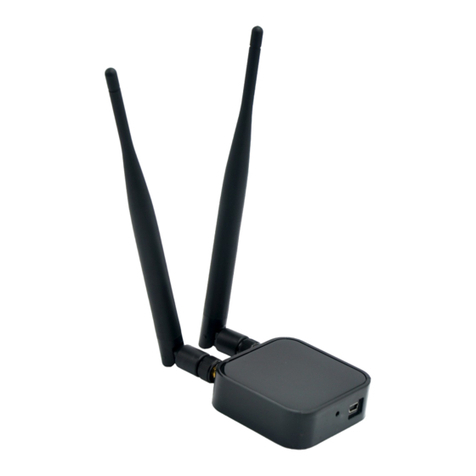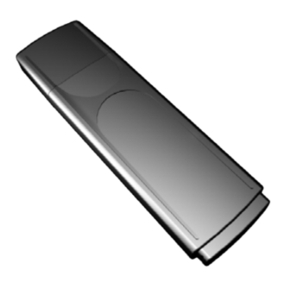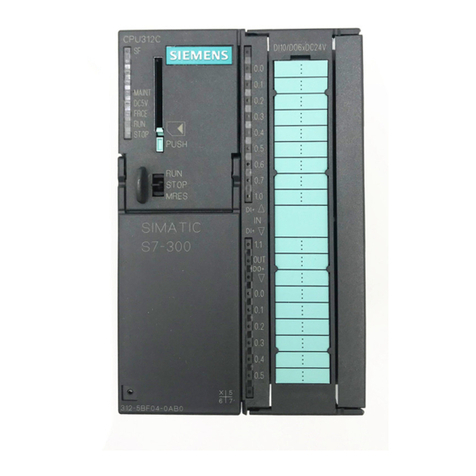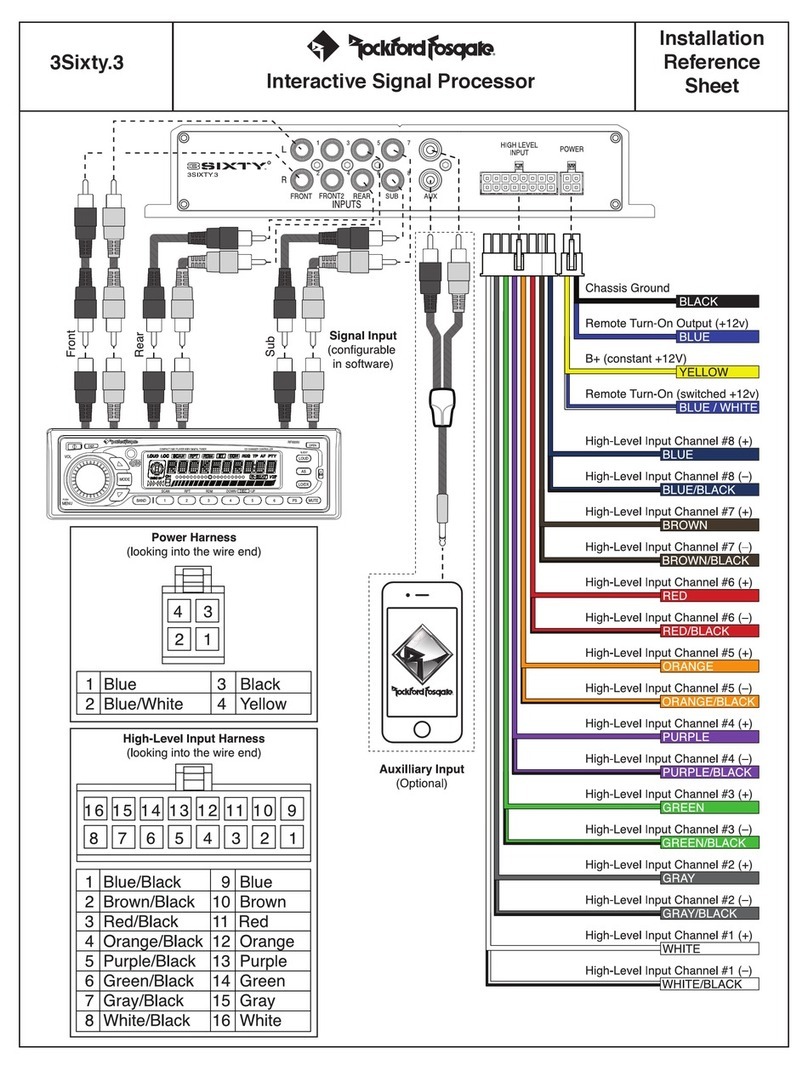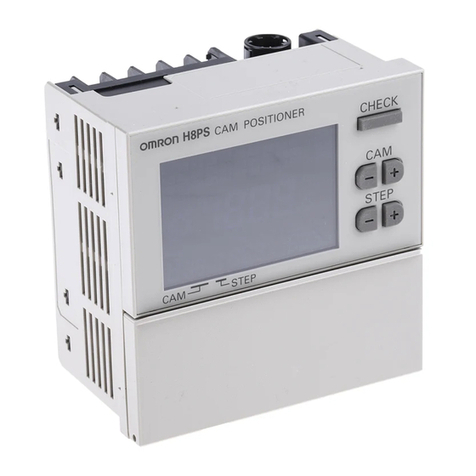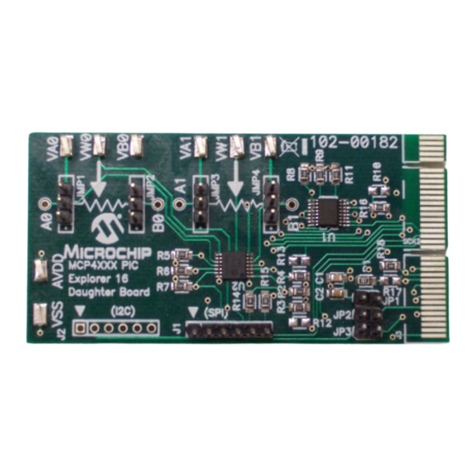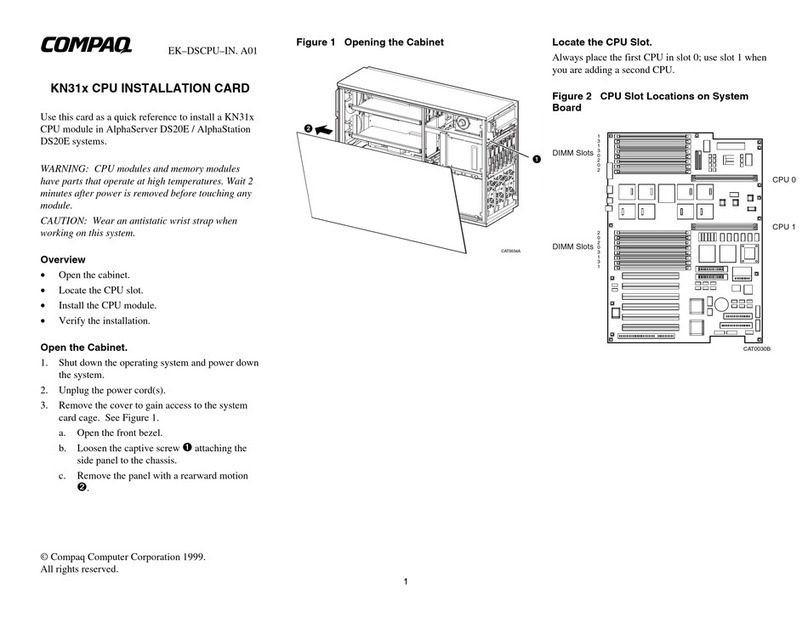JENCO 6312 DT User manual

OPERATION MANUAL
JENCO MODEL 6312 DT
MICROCOMPUTER BASED
DO/ Temperature
TRANSMITTER & CONTROLLER
JENCO INSTRUMENTS, INC. JENCO ELECTRONICS, LTD.
7968 ARJONS DR., SUITE C P.O. BOX 161-178, ZhongXiao
SAN DIEGO, CA 92126 NanGang,TaiPei, TAIWAN
TEL: (858) 578-2828 TEL: (886-2) 2782-3226
FAX: (858) 578-2886 FAX: (886-2) 2782-3234
SHANGHAI JENCO ELECTRONICS, LTD.
18 Wangdong zhong Road,Sijing Town,Songjiang,Shanghai,CHINA.
TEL: 86-21-5761-9599
FAX: 86-21-5761-9598
E-MAIL: [email protected]
Web site:www.jencoi.com ; www.jenco.com.cn

2
CONTENTS Page
I. INITIAL INSPECTION and ASSEMBLY 3
MOUNTING PROCEDURE 3
II. GENERAL INTRODUCTION 4
III. USING THE JENCO MODEL 6312DT 5
A. FRONT PANEL 5
B. NORMAL MODE DISPLAY 6
C. REAR CONNECTORS 7
D. TURNING ON/OFF THE INSTRUMENT 8
IV. MODEL 6312DT MODES 9
A. MAIN DISPLAY MODE 9
B. CALIBRATION/SETTING MODE 9
How to use the keys 10
a. PASSWORD CHECK page 11
b. USER SETTING page 11
c. DO CALIBRATION page 12
Follow these steps to do a Standard Calibration 13
Follow these steps to do a Product Calibration 14
d. DO CONTROL SETTING page 15
e. CURRENT OUT SETTING page 16
f. TEMP. CURRENT SETTING page 16
g. TEMP. CONTROL SETTING page 16
V. CONTROLLING THE RELAYS 17
A. RELAY ISOLATION VOLTAGE 17
B. RELAY OUTPUT LOAD 17
C. RELAY ACTION, SET POINT & HTSTERESIS 18
D. DO RELAYS 18
E. TEMPERATURE RELAY 19
VI. DO & TEMP 4-20 mA OUTPUT 19
A.ISOLATION VOLTAGE 19
B. OUTPUT LOAD 19
C. DO/TEMP LINEAR CURRENT OUTPUT 19
VII. RS485 INTERFACE OPERATION 21
A.INTRODUCTION 21
B. PREPARING THE METER 21
VIII. ERROR DISPLAYS AND TROUBLESHOOTING 22
IX. SPECIFICATIONS 23
X. WARRANTY 25

3
I. INITIAL INSPECTION and ASSEMBLY
Carefully unpack the instrument and accessories. Inspect for
damages made in shipment. If any damage is found, notify your
Jenco representative immediately. All packing materials should be
saved until satisfactory operation is confirmed.
MOUNTING PROCEDURE
1. Make a cutout
on any panel, with
a thickness of
1/16 in. (1.5 mm)
to 3/8 in. (9.5mm).
2. Remove the
mounting
assembly from the
controller and
insert the
controller into the
cutout.
3. Replace the
mounting bracket assembly onto the controller and secure the
controller to the mounting panel.
Warning:
If the equipment is used in a manner not specified by the
manufacturer, the protection provided by the equipment may be
impaired.
Cleaning the instrument:
1. Be sure to remove the power before attempting to clean the
meter.
2. Use a lint free cloth and clean water or neutral detergent.
3. Wipe the outer surface of the instrument only.
4. Wipe dry the instrument before power again.

4
II. GENERAL INTRODUCTION
The Jenco Model 6312DT (DOandTemperature) system, is a
rugged microprocessor based instrument assembled in a
watertight ¼DINcase, designed for use in laboratories and
process control applications.
The model 6312DT microprocessor allows the user to easily
recalibrate the parameters for the probes. The DO system can do
single or dual point calibration, regardless of which dissolved
oxygen display you use. The microprocessor also performs a self-
diagnostic routine every time you turn on the unit providing you
with basic information about the stability of the instrument.
The system simultaneously displays DO, Temperature, relay status
and current output in one LCD graphic screen. The LCD also
includes a backlight for badly lit environments. This system uses
a “polygraphic clark” membrane for the DO and a precise
thermistor for temperature, providing you with accurate readings
for all your measurements.
The model 6312DT is equipped with three programmable high or
low relays for DO and one programmable high or low relay for
temperature; all relays are hysteresis driven. The system also has a
isolated 4-20mA analog output for DO & temperature each, offset
and span configurable for the DO & temperature display.
The model 6312DT comes with a RS485 interface which can easily
let the user log all data with an IBM©PC/AT compatible
computer. For advanced users, the model 6312DT may also be
remotely controlled from main display mode to all
calibration/setting modes.

5
III. USING THE JENCO MODEL 6312DT
A. FRONT PANEL
1. The [MODE/-]key.
1a. In Normal mode this key
will change the DO display
to DO %, DO ppb or DO
ppm.
1b. In Calibration/Setting
mode this key will move to
the next digit of the current
active parameter.
1c. In Calibration/Setting mode, pressing this key for two
seconds will move you back to the previous parameter.
2. The [CAL/VIEW]key.
2a. In Normal mode, the display will go to Calibration / Setting
mode if you press this key for about two seconds.
2b. During Calibration/Setting mode this key will switch to the
next available Calibration/Setting page. Pressing this key at
the last Calibration / Setting page will return the user to the
Normal mode.
3. The [ ]UP key.
During Calibration/Setting mode this key will increment the
current blinking digit of the active parameter.
4. The [ ]DOWN key.
During Calibration/Setting mode this key will decrement the
blinking digit of the active parameter.
During “DO CALIBRATION “ the user can press this key to
skip ZERO calibration.
5. The [ ]ENTER key.
During Calibration/Setting mode this key will save the
current modified parameter and move to the next parameter
on the page if the parameter is the last one in the page then it
will move to first parameter on the next available page.

6
6. The [ ] LIGHT key.
This key will turn on or turn off the backlight of the LCD.
The backlight will automatically turn off if there is no key
activity for about two minutes.
7. LCD screen.
B. NORMAL MODE DISPLAY
1. DO mA OUT: -thiswill
display the output of the DO 4-
20 mA circuit.
2. TEMP mA OUT -thiswill
display the output of the
Temperature 4-20 mA circuit.
At POWER-ON DO & TEMP
mA OUT will show “OFF”for
about three seconds before
going to main display mode.
After exiting the Calibration /Setting pages, a “FROZEN”
message will be displayed for about 3 seconds if the unit is not
password locked.
3. annunciator - This will be displayed if Calibration/Setting
pages are password locked meaning the user can’t change
the values unless the correct 4 digit number has been entered.
4. H1 (High action relay 1) or L1 (Low action relay 1)- this is the
status of the DO Relay 1, if this is displayed then the Relay is
ON. H1 means the relay action is HIGH while L1 means the
relay action LOW. annunciator
5. H2 (High action relay 2) or L2 (Low action relay 2)annunciator –
this is the status of DO Relay 2, function is same with RELAY 1.
6. L3 (High action relay 3) or L3 (Low action relay 3)
annunciator – this is the status of DO Relay 3, function is same
with RELAY 1.

7
7. H4 (High action relay 4) or L4 (Low action relay 4) annunciator–
this is the status of the Temperature Relay 4, if this is displayed
then the Relay is ON. H4 means the relay action is HIGH while
L4 means the relay action LOW.
8. Dissolved oxygen display and unit (%, ppb or ppm).
9. Temperature display and unit (℃).
C. REAR CONNECTORS
Before wiring the probes, relays, analog output, RS485 and power
cord be sure that you are connecting to the right terminal as shown
above. Remember that the unit is ON once the user plugs in the
power cord to an AC power supply.
1.ConnecttheAClinetotherearoftheinstrument.Themodel
6312DT can be used with 230VAC(115VAC)50/60 Hz. Power
consumption is 6 watts.MakesuretheEARTH connector is
connected to the earth lead of the AC power line.
2. Connect the proper load to the output relays. Make sure that the
load does not exceed the relay rating, 2.5Amp at
230VAC(5Amp at 115VAC).
3. Set the proper load to the 4-20mA output connector. Make sure
that the load impedance is less than 500 Ohms.

8
CAUTION:
MAKE SURE YOU CONNECT THE AC POWER CORD TO THE
CORRECT AC TERMINALS. CONNECTING INCORRECTLY
MAY DAMAGE THE UNIT PERMANENTLY.
D. TURNING ON/OFF THE INSTRUMENT
By just plugging the unit to a
correct AC voltage the unit will be
ready for use. There is no Power
key so unplugging and plugging
the unit will turn OFF or turn ON
the unit respectively.
After the unit is turned on, it will
perform some basic self-
diagnostics and will display “OK”or“BAD”. If you received any
“BAD” messages turn OFF the unit and turn it ON again. (See VIII.
ERROR DISPLAYS AND TROUBLESHOOTING).
If the message persists then you might need to call your
distributor. (See XI. WARRANTY).
After the self-diagnostic is complete the temperature will be
displayed on the lower part of the LCD screen and you are ready
to make DO calibration or measurements. Just immerse the probes
halfway to the liquid. If possible do not allow the probes to touch
any solid object in the solution. There should be no air bubbles
around the probes either. Shaking or moving the probes
vigorously before recording any measurement will dislodge any
bubbles formed in the probes.
IV. MODEL 6312DT MODES

9
A. MAIN DISPLAY MODE
Turning ON the unit will always start in main display mode.
This instrument is designed to provide 4 distinct measurements:
1. Temperature - current temperature of the solution, which is
always displayed
2. Dissolved Oxygen % -ameasurementofoxygeninpercent
saturation.
3. Dissolved Oxygen ppm - a measurement of oxygen in ppm.
4. Dissolved Oxygen ppb- a measurement of oxygen in ppb.
Temperature and DO (% , ppb or ppm) are always simultaneously
displayed in the graphic LCD screen in normal mode. You can
select which DO unit to display by pressing the [MODE/-]key.
B. CALIBRATION/SETTING MODE
Pressing the [CAL/VIEW] key for about two seconds during main
display mode will bring-up the first page of seven pages of the
Calibration/Setting mode. Pressing [CAL/VIEW] key will switch
to the next page until the last page, where pressing [CAL/VIEW]
again will return the user to main display mode.
Below is a simple flowchart showing the path of the [CAL/VIEW]
key:

10
How to use the keys
1. At MAIN DISPLAY you need to press and hold the
[CAL/VIEW] key for two seconds to change the display to
VIEW SETTING PAGE or if the instrument is password locked
the display will be PASSWORD CHECK page.
2. You can change any blinking options or digit by pressing the
[]or[]keys.
3. During main display mode you can press [MODE/-]keyto
select the DO display unit .
4. For options in digit format you need to press the [MODE/-]
key to move the cursor to the next digit .
5. If you are satisfied with the selection you made you need to
anyblinkingoptionsordigitbypressingthe[]or[]keys.
For options in digit format you need to press the
[MODE/-- ] key to move to the next digit . If you are satisfied
with the selection you made you need to press the [ ]ENTER
key to save the changes and move to the next option. If you

11
don’t need to change the current blinking option just press the
[]ENTER key to move to the next selection.
a. PASSWORD CHECK page
You will only see this page if
the unit is password locked. To
change any settings or
calibration you need to unlock
the system to remove the
“PASSWORD LOCKED”
message. You need to enter the
correct four-digit number on
the “ENTER PASSWORD”
input. You can still view all the pages of Calibration/Setting mode
if the system is password
locked by just pressing the
[CAL/VIEW] key on this page.
If the unit is “PASSWORD
LOCKED”goingto
Calibration/Setting mode will
not affect the function of the
relays and current output.
CAUTION: If the unit is not
locked then every time the user
enters the Calibration/Setting
mode the relays and current output will be frozen.
b.USER SETTING page –
You will only see this page if the unit is not password locked. This
page is just a “WARNING”, telling you that all relays and current
output are frozen, and that you can calibrate and change the
settings.

12
NOTE: FROZEN MEANS ALL THE RELAYS AND THE
CURRENT OUTPUT WILL MAINTAIN THEIR LAST STATE
UNTIL THE USER RETURNS TO MAIN DISPLAY MODE.
c. DO CALIBRATION page -
ATC TEMP. - The current
temperature of the solution.
1.PRESSURE - user changeable
pressure value for DO
computations.
2.SALINITY - user changeable
salinity value for DO
computations.
3. ZERO CAL –Thiscalibration
is used for a 2-point standard
DO calibration. If you are doing a product calibration then you
need to skip this calibration by pressing the []DOWNkey.If
you are doing a 1-point standard calibration then you need to
also skip this calibration. If you are doing a 2-point standard
calibration then you need to place the probe in a 0% oxygen
solution and press [] to start the zero calibration. If you want
to calibrate in a different DO unit on what is displayed now,
then you need to go back to the normal display and press the
[MODE] key to change to the correct DO unit return to this
option. Wait for reading to be stable before pressing the []key
again. You can only calibrate if the reading is lower than 4.5%
( or equivalent value in ppb or ppm).
4. STD. CAL or PROD. CAL: In this calibration you can choose
first if you are doing a “STD. CAL” (Standard Calibration) or a
“PROD.CAL” (Product Calibration).
To accurately calibrate the model 6312DT(F)you will need
the following information:

13
i. The approximate pressure (in mbar) of the region in which you
plan to take your dissolved oxygen measurements.
ii. The approximate salinity of the water you will be analyzing.
Fresh water has a salinity of approximately zero. Sea water has a
salinity of approximately 35 parts per thousand (ppt).
a. STD.CAL – The unit of this calibration will depend on the unit
of DO at normal/main mode.
Follow these steps to do a Standard Calibration:
1. If the DO probe is new and not yet connected to the meter,
follow the DO probe manufacturer’s instruction on how to
prepare the probe for first use and how to connect to the meter.
2. Turn on the unit and place the probe in suitable 100% air
saturated container.
3. Wait for the temperature reading and the un-calibrated DO
reading to stabilize.
4. Press the [CAL/VIEW] key for about two seconds to enter
CALIBRATION/SETTING mode and press [CAL/VIEW] key
again until you reach DO CALIBRATION page.
5. Input local PRESSURE and SALINITY.
6. If you are doing a zero calibration refer to 3.ZERO CAL.
7. Press the [ ]UPor[
] DOWN to select “STD. CAL” then
press the [ ] ENTER key to save the selection.
8. If you are calibrating in %then the 100% calibration will be
displayed. An error will be displayed if the input is not within
the normal DO range. A [] icon will flash, pressing the
[]ENTER key will start the calibration. If the input is not
within the DO calibration limit then an error message will be
displayed. If all is well then it will save the new calibration and
move to the next page.
9. If you are calibrating in ppm/ppb then the current reading in
ppm/ppb will be displayed. If you press the [ ]ENTER key,
the unit will capture the current value and then you can change

14
the value by using the [MODE/-],[]UPand[]DOWN
keys. If you are satisfied with the ppm value, you need to press
the [ ]ENTER key to save the new calibration. If the DO input
is within calibration range then the new calibration will be
saved and move to the next page, otherwise an error message
will be displayed.
b. PROD.CAL – You can only select PROD.CAL if you did not do
a ZERO CAL first. If you are trying to do a PROD.CAL but
started a ZERO CAL you need to go back to ZERO CAL and
press the [] DOWN key to skip it. The unit of this calibration
willdependontheunitofDOatnormal/mainmode.
Follow these steps to do a Product Calibration:
1. Wait for the temperature reading and the un-calibrated DO
reading to stabilize.
2. Press the [CAL/VIEW] key for about two seconds to enter
CALIBRATION/SETTING mode and press [CAL/VIEW] key
again until you reach DO CALIBRATION page.
3. Input local PRESSURE and SALINITY.
4. Press the [] DOWN key to skip ZERO CAL.
5. Press the []UPor[
] DOWN to select “PROD. CAL” then
press the [ ] ENTER key to save the selection.
6. A [] ENTER icon will flash, pressing the []ENTER key will
start the product calibration. If the reading is higher than 5%
( or equivalent value in ppb or ppm) then it will capture the
reading and let you change the value to your specified value.
7. Press [] ENTER key to save your product calibration and
move to the next page.

15
d. DO CONTROL SETTING page –
1. RELAY/ mA : User needs to
press []and[
] keys to select
one of three DO units,
%/ppb/ppm, for the relay control
and current ouput.
1. HI / LO RELAY1 (action)-The
action for this relay is changeable,
you can choose “HI”-action or
“LO” action. (In HI-action the relay will turn ON if the DO
reading is greater or equal to RELAY1 value, in LO-action the
relay will turn OFF if the DO reading is greater or equal to
RELAY1 value, which is modified by the hysteresis value. )(See
chapter V. CONTROLLING THE RELAYS .)
Use []and[
] keys to select the RELAY1 action and press []
key to save. After you select the RELAY1 action you can now
select the RELAY1 set point. Use []and[
] keys to change
the blinking digit, use the [MODE/-] key to select another digit
and the [] key to save the new set point.
2. HI / LO RELAY 2 – the function and setting same with Relay 1.
3. HI / LO RELAY 3 - the function and setting same with Relay 1.
4. HYSTERESIS (value) - this is the actual value of the hysteresis.
You can change this value from 0.1 to 99.9 % , 0.01 to 9.999
ppm or 0 to 9999ppb . ( See chapter V. CONTROLLING THE
RELAYS .)

16
e. DO CURRENT OUT SETTING page -
1. DO 4mA OUT – This value will be used in conjunction with 20
mA to plot the current output.
(See chapter VI.4-20 mA
OUTPUT.)
2. DO 20mA OUT –Thisvalue
will be used in conjunction
with the 4 mA value to plot the
output. (See VI.DO&TEMP.4-
20 mA OUTPUT)
f. TEMP CURRENT SETTING page-
1. TEMP 4mA OUT – This value will be used in conjunction with
20 mA to plot the current
output. (See chapter VI.4-20
mA OUTPUT.)
2. TEMP 20mA OUT –This
value will be used in
conjunctionwiththe4mA
value to plot the output. (See
chapter (See VI. DO & TEMP. 4 -
20 mA OUTPUT)
g. TEMP. CONTROL SETTING page –
1. RELAY 4 - the temperature
has only one relay to control
you need to set what action it
will use, HIGH or LOW action. .
(In HIGH-action the relay will
turn ON ifthetemperatureis
greater or equal to RELAY4 set

17
point, in LOW-action the relay will turn OFF if the temperature
is less than or equal to RELAY4 set point, which is modified by
the hysteresis value (See chapter V. CONTROLLING THE
RELAYS .)
2. SET POINT (For positive temperature only)- this is the user
changeable value for the Temperature Alarm relay.
3. HYSTERESIS (value)- this is the actual value of the hysteresis.
You can change this value from 0.1 to 19. 9°C. (See chapter V.
CONTROLLING THE RELAYS.)
4. RS 485 ID – this is the unique ID/Address for the unit. If you
are connecting multiple model 6312DT or other Jenco models for
logging purposes then this ID/Address must be unique for each
connected unit. This ID/Address is the same address that must
be used by the PC program to communicate with this unit.
5. PASSWORD SET -thisisyoursecuritycodeiftheunitislocked
the value here will not be available. You need to input the
correct code in the PASSWORD CHECK page.
CAUTION: The user is responsible in remembering their
password number otherwise you would no be able to calibrate
or change the settings.
V. CONTROLLING THE RELAYS
A. RELAY ISOLATION VOLTAGE
The maximum isolation voltage of the relay output contacts is
1500 VDC. The voltage differential between the relay output
contacts and the load should not exceed 1500 VDC.
B. RELAY OUTPUT LOAD
The current through the relay output contacts should not
exceed 2.5 Amp at 230 VAC (5 Amp at 115 VAC) in order not to
cause permanent damage to the relay contacts. This rating is
specified for resistive loads only.

18
C.RELAY ACTION, RELAY SETPOINT & HYSTERESIS VALUE
Relay Action Effective RELAY-
ON Set Point
Effective RELAY-
OFF Set Point
HIGH S.P. S.P. – (H.V)
LOW S.P S.P. +(H.V.)
S.P. = Relay Set point H.V.= Hysteresis value (Dead Band)
If the relay action is set to HIGH, the relay will turn ON at (SET
POINT), and will turn OFF at (SET POINT-HYSTERISIS).
If the relay action is set to LOW, the relay will turn ON at (SET
POINT), and will turn OFF at (SET POINT + HYSTERISIS).
D. DO RELAYS
There are three independent Relay channels for DO display.
(see figure 1.). The hysteresis value will be used by three DO
relays.
Figure 1
The actions of the DO relays are dependent on set point, relay
action type (HIGH or LOW) ,hysteresis value and the current DO
display. (see figure 1 ).

19
E. TEMPERATURE RELAY
One relay channel is available for temperature display which
has independent set point, action (see figure 1)setting(HIGHor
LOW ) and hysteresis value.
The action of the Temperature relay is dependent on set point,
relay action type (HIGH or LOW), hysteresis value and the
current Temperature display.(Seefigure 1).
VI.DO&TEMP4-20mAOUTPUT
A. ISOLATION VOLTAGE
The maximum isolation voltage of the 4-20 mA output is 500
VDC. The voltage differential between the 4-20 mA output and the
load should not exceed 500 VDC.
B. OUTPUT LOAD
The maximum load is 500. Output current inaccuracies may
occur for load impedance in excess 500.
C. DO/TEMP LINEAR CURRENT OUTPUT
DO/TEMP LINEAR output . Figure 2
mA
pH/DO
pH
Set
P
oint
Set
Point
4mA
20mA 20mA
4mA
Point
Set
P
oint
Set
pH
pH/DO
mA
12mA 12mA
20mA
4mA 20mA 4mA

20
The analog output will produce a linear analog output if the user
selects this option. The DO analog output will be dependent on the
DO_4 mA setting,DO_20 mA setting and the current DO
display.
The DO & temperature LINEAR analog output is based on the
following equation:
mA(DO) = 4mA+(16mA)*(D(DO) - DO(4)) /(DO(20) - DO(4))
mA(Temp)=4mA+(16mA)*(D(Temp) -TEMP(4) ) / (TEMP(20) -
TEMP(4))
Where :
mA(DO) & mA(Temp) =analogoutput
D(DO) &D
(TEMP) = current DO & temperature display
DO(4)& TEMP(4) = DO & temperature user setting for 4 mA
DO(20) & TEMP(20)= DO & temperature user setting for 20
mA.
Note :
1. The range for 4mA and 20mA settings is 0.0 to 599.9% , 0 to 6999
ppb or 0.00 to 69.99 mg/L.
2. The absolute difference of the 4mA and 20mA settings must be
greater or equal to 1.0%, 100ppb or 0.10 mg/L or else the analog
output will be disabled.
This manual suits for next models
2
Table of contents
Other JENCO Computer Hardware manuals
Popular Computer Hardware manuals by other brands
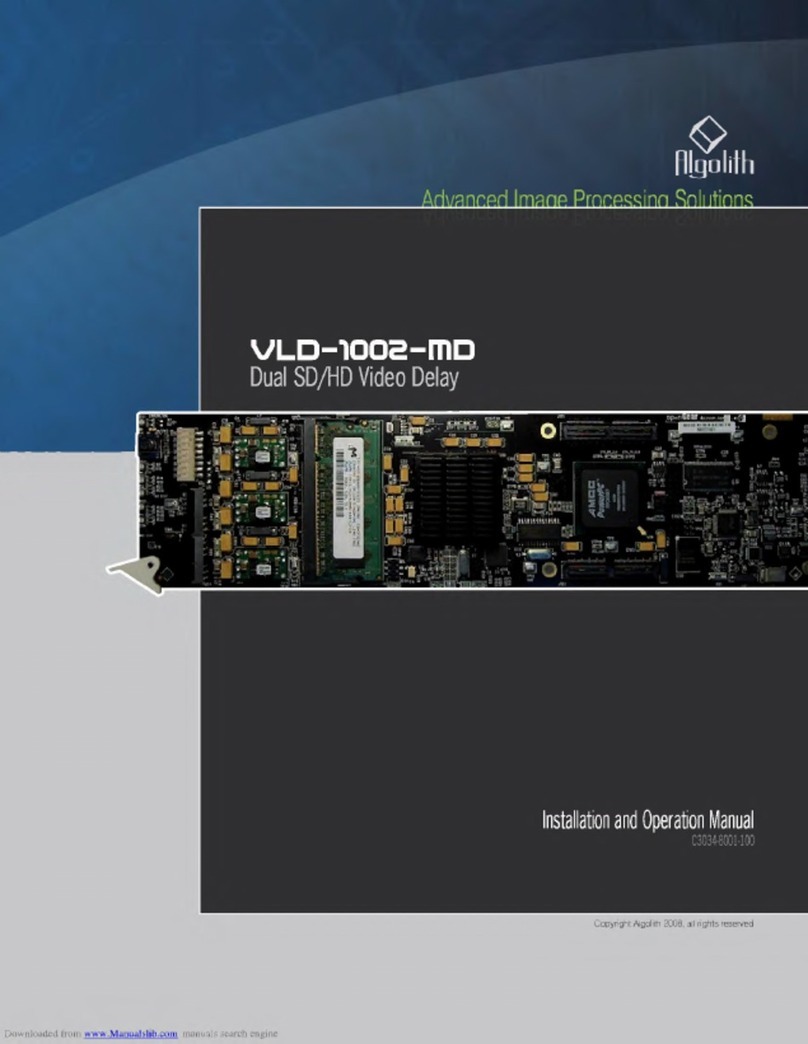
Algolith
Algolith Dual SD/HD Video Delay VLD-1002-MD Installation and operation manual
Freescale Semiconductor
Freescale Semiconductor MPC8260 PowerQUICC II Family Family reference manual

Renesas
Renesas QB-RL78D1A2 user manual
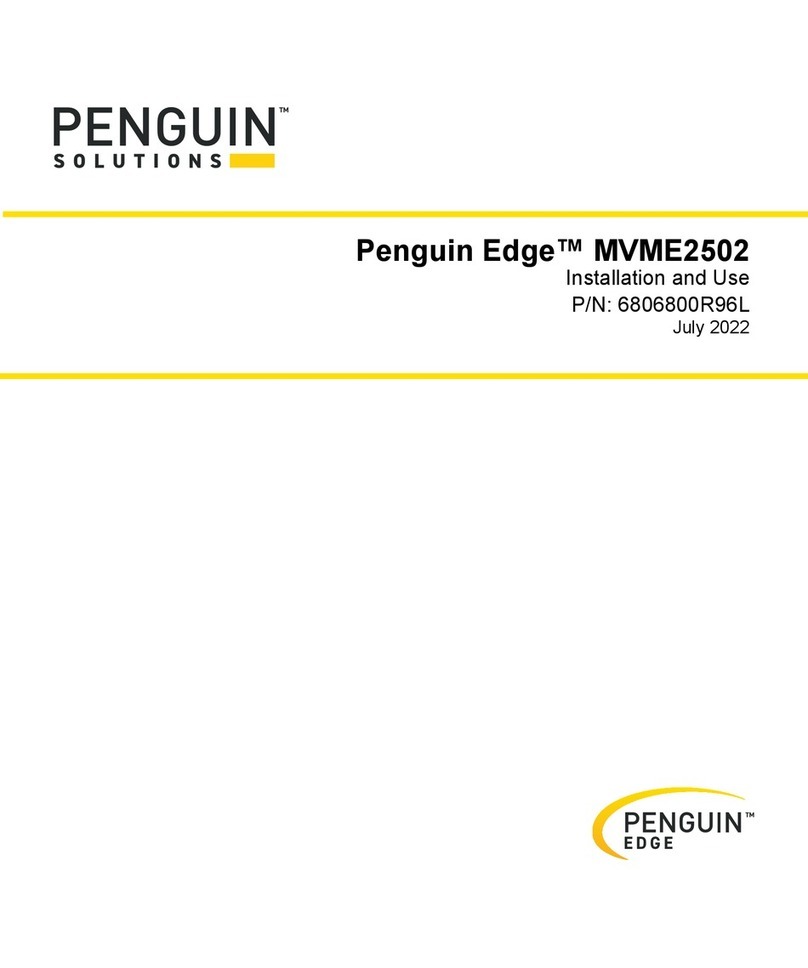
SMART Embedded Computing
SMART Embedded Computing Penguin Edge MVME250 Series Installation and user manual
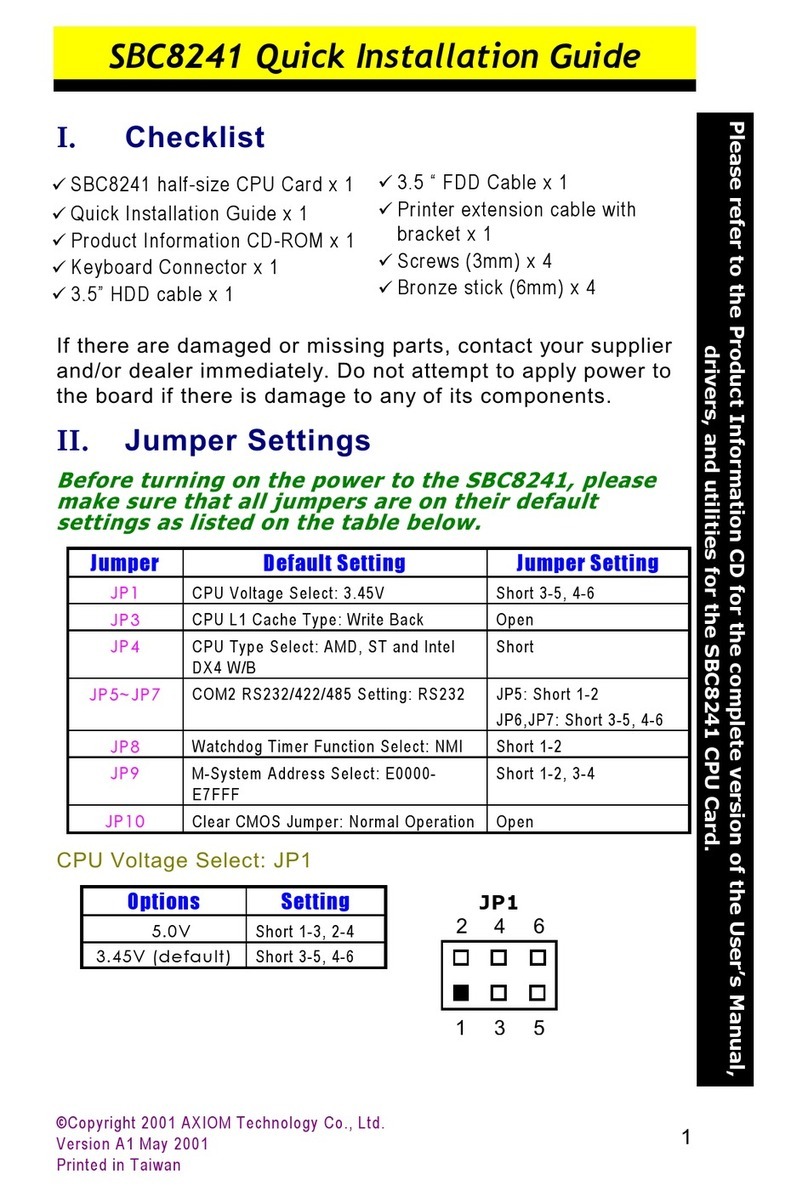
Axiom
Axiom SBC8241 Quick installation guide
Cypress Semiconductor
Cypress Semiconductor CY7C1365C Specification sheet
